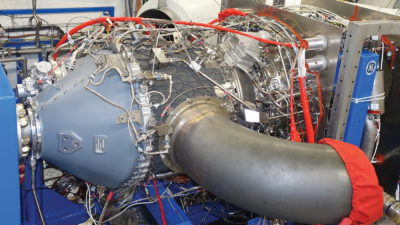Progress on avoidance, guidance and displays
By Erik Theunissen and Brandon Suarez|December 2016
The Digital Avionics Technical Committee advances the development and application of communications, navigation, and surveillance systems used by military and commercial aircraft.
On the long road to allowing unmanned aircraft full access to the National Airspace System, 2016 was a pivotal year for achieving important milestones in the area of sensors, algorithms, displays, flight testing and development of the minimum operational performance standards.
For unmanned aircraft to meet the intent of the International Civil Aviation Organization’s Annex 2, a technical solution is being developed to enable a detect-and-avoid, or DAA, capability. RTCA’s Special Committee 228, or RTCA SC-228, is developing a technical standard for airborne and ground-based equipment that will aid remote pilots in remaining well clear of and avoid collisions with other airspace users. Using a variety of sensors, such DAA equipment will detect cooperative as well as noncooperative intruder aircraft and provide pilots with aural and visual guidance for remaining well clear. One of the key features of the “Phase I” system SC-228 is codifying the alerting and guidance that the remote pilot will receive to avoid a future loss of “well clear.”
In anticipation of future alerting, guidance and display requirements for DAA, General Atomics Aeronautical Systems started the development of the Conflict Prediction and Display System in 2009. The guidance functionality embedded in CPDS is based on the mathematical foundation developed by researchers at NASA’s Langley Research Center in Virginia for conflict prevention algorithms. Initially, many CPDS design requirements followed from RTCA DO-317B, but the community was still working on agreement of key aspects, such as the definition of “well clear.” As the minimum operational performance standards matured during 2015 and 2016, CPDS was updated in terms of alerting and guidance functions and display. Questions on draft alerting and guidance criteria related to minimum operational performance standards have been addressed, in part, using flight tests.
A key question for alerting and guidance concerns the interoperability with the existing traffic collision avoidance system, or TCAS. To address this question, dedicated multi-intruder conflict geometries have been designed that are aimed at triggering both DAA and TCAS alerts, as well as encounters that should only trigger DAA alerts. Initial analysis was performed using simulations to gather baseline data. An important milestone in 2016 was the gathering of data for such encounters during actual flight. The data was collected as part of the NASA-led series of flight tests known as “Flight Test 4.” These DAA system flight tests included collaborative contributions from the FAA, NASA, Honeywell, General Atomics and BAE Systems. The prototype DAA system used in these flight tests included a surveillance suite comprised of a TCAS providing active transponder-based surveillance, a transponder capable of ADSB-In and a General Atomics-designed air-to-air radar for DAA.
A Honeywell-developed surveillance algorithm produces a single track onboard the aircraft, which is then downlinked to the ground control station using satellite communications. NASA’s Ikhana unmanned aircraft system has been used as the primary test vehicle, and several Honeywell and NASA aircraft have been intruders. Using encounter geometries with up to four closely spaced intruders, the capability of the new DAA radar to distinguish between different tracks on a timely basis was demonstrated in June 2016.
A key capability for the 2016 flight tests was a real-time view of the behavior of the DAA alerting parameters, which significantly contributed to determining whether an encounter had been executed accurately.
The DAA minimum operational performance standards are in their final phase of development and were to be published by the end of the year. Meanwhile, the CPDS has been extended to be compatible with the latest version of the FAA’s Airborne Collision Avoidance System for Unmanned Aircraft to begin to address “Phase II” capabilities within RTCA SC-228 and SC-147. ★



































